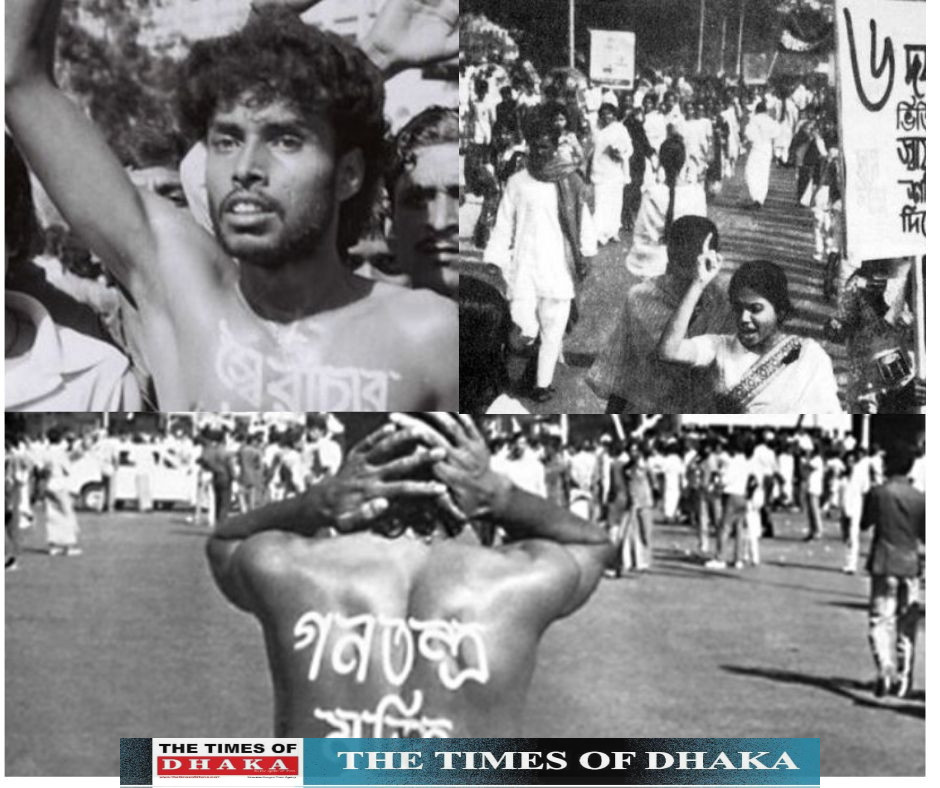
The popular uprising of 1990 is remembered as a glorious chapter in the history of Bangladesh. This coup was the culmination of the struggle of the people of the country for democracy against the military rule. Military rule led by General Hussain Muhammad Ershad continued for a long time, which led to deep discontent and rebellion among the people of the country. The result of this discontent was the historic popular uprising of 1990.
In 1982, General Ershad seized power through the military and embarked on a dictatorship. Under his rule, the erosion of democratic rights, the curtailment of press freedom, and increased repression of opposition political parties led to growing anger in the country. From 1987, this anger began to take the form of protests and reached its peak in 1990.
Students, intellectuals, workers, and various political parties came together to strengthen the anti-Ershad movement. In December 1990, the movement took its final form. Massive rallies and processions started on the streets of Dhaka led by the students, which spread across the country. Against the repressive policies of the government, the agitators became more organized and strict.
Ershad’s resignation
Seeing the deteriorating situation and the pressure of the movement, on 4 December 1990, General Ershad was finally forced to resign. His resignation ended a nine-year dictatorship and restored democracy in Bangladesh. After Ershad’s fall, an interim government led by Justice Shahabuddin Ahmed was formed, which held free and fair elections.
Influence and importance
The 1990s popular uprising occupies a unique place in the history of Bangladesh’s democratic movement. This movement led to the establishment of democracy in the country and later a democratic government was established through the 1991 general elections. The coup of 1990 is still remembered today as a reflection of the collective will of the people and their commitment to democracy.
Through this popular uprising, the people of Bangladesh have proved that they are capable of defeating any powerful dictatorship when united. It is considered as an exemplary event not only in the history of Bangladesh but for the entire world.

 A.B.M. Abir
A.B.M. Abir 


















